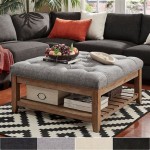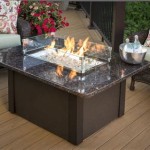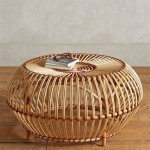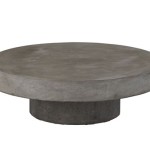DIY Lift Top Coffee Table: A Comprehensive Guide
The integration of multi-functional furniture into contemporary living spaces has gained significant traction. Among these versatile pieces, the lift-top coffee table stands out for its ability to seamlessly transition between a standard coffee table and a convenient workstation or dining surface. This article provides a detailed guide for constructing a DIY lift-top coffee table, encompassing material selection, design considerations, and step-by-step instructions.
A DIY approach to furniture construction offers several advantages. Primarily, it grants control of the design process, allowing for customization to meet specific aesthetic preferences and spatial constraints. Furthermore, it often results in cost savings compared to purchasing pre-fabricated lift-top coffee tables, particularly those of high quality and unique design. Finally, the process of creating a functional piece of furniture can be a rewarding experience, fostering a sense of accomplishment and enhancing practical skills.
Key Point 1: Planning and Design Considerations
Prior to commencing the physical construction of the lift-top coffee table, a comprehensive planning phase is essential. This phase involves defining the desired dimensions of the table, selecting appropriate materials, and meticulously designing the lift mechanism. Each of these aspects directly impacts the functionality and aesthetic appeal of the final product.
The dimensions of the coffee table should be determined based on the size of the living room, the height of the surrounding seating, and the intended use of the table. A standard coffee table height typically ranges from 16 to 18 inches, while the lifted height should be comfortable for working or dining from a seated position, generally around 26 to 28 inches. The length and width should be proportionate to the other furniture in the room, ensuring a harmonious visual balance. Consider the reach needed for accessing items on the table while seated and adjust the dimensions accordingly.
Material selection is another critical consideration. Solid wood, such as oak, maple, or pine, offers durability and a classic aesthetic. These options are suitable for both the table frame and the tabletop. Plywood, particularly birch or maple plywood, represents a cost-effective alternative for the table frame and interior components. Medium-density fiberboard (MDF) is generally avoided for structural components due to its susceptibility to moisture damage, but can be used for interior panels if appropriately sealed. The choice of wood also influences the finishing techniques that can be applied, impacting the overall aesthetic of the table.
The lift mechanism is the core component that distinguishes a lift-top coffee table from a standard one. Several types of lift mechanisms are available on the market, each with its own advantages and disadvantages. Spring-loaded mechanisms are relatively inexpensive and easy to install, providing a simple up-and-over lifting motion. Gas-spring mechanisms offer smoother and more controlled lifting, often incorporating a soft-close feature. Hinged mechanisms provide a customizable solution, allowing for the creation of unique lifting patterns and storage compartments. The selection of the lift mechanism should be based on budget, desired functionality, and skill level in woodworking.
Detailed plans should be drafted, including precise measurements and joinery details. A three-dimensional sketch or rendering can be helpful for visualizing the final product and identifying potential design flaws. Carefully consider the method of joinery to be used, such as mortise and tenon joints, dovetail joints, or screw and glue joints. The choice of joinery method depends on the type of wood, the tools available, and the desired level of structural integrity. Ensure that the design incorporates sufficient reinforcement to support the weight of the tabletop and any items placed on it.
Key Point 2: Construction Process: Step-by-Step Guide
The construction process involves several distinct stages, including cutting the wood to size, assembling the frame, installing the lift mechanism, and finishing the table. Accuracy and attention to detail are paramount throughout the process to ensure a structurally sound and aesthetically pleasing result.
Begin by cutting all the wood components to the dimensions specified in the plans. A table saw is ideal for making precise cuts, but a circular saw or hand saw can also be used with careful measurement and marking. Ensure that all cuts are square and clean to facilitate accurate joinery. Sand all edges and surfaces of the wood components to remove any splinters or imperfections. This step is crucial for achieving a smooth and professional finish.
Assemble the table frame using the chosen joinery method. If using mortise and tenon joints, carefully cut the mortises and tenons, ensuring a tight and accurate fit. Apply wood glue to the joints and clamp them securely until the glue dries completely. If using screw and glue joints, pre-drill pilot holes to prevent the wood from splitting. Use screws of appropriate length and diameter to securely fasten the pieces together. Reinforce the corners of the frame with corner blocks or metal brackets for added stability.
Install the lift mechanism according to the manufacturer's instructions. The specific installation process varies depending on the type of mechanism selected. Generally, this involves attaching mounting brackets to the table frame and the underside of the tabletop. Ensure that the mechanism is properly aligned and securely fastened to prevent wobbling or binding. Test the lifting mechanism to verify that it operates smoothly and correctly. Adjust the mechanism as needed to achieve the desired lift height and range of motion.
Construct the tabletop from solid wood, plywood, or a combination of both. If using solid wood, join the boards together using edge gluing or biscuits. Clamp the boards securely until the glue dries completely. If using plywood, ensure that the edges are properly sealed to prevent moisture absorption. Attach the tabletop to the lift mechanism, ensuring that it is centered and securely fastened.
With the table fully assembled, carefully sand all surfaces to prepare them for finishing. Start with a coarse grit sandpaper and gradually progress to finer grits until the surface is smooth and even. Remove all dust and debris before applying the finish. Apply the chosen finish according to the manufacturer's instructions. Options include stain, paint, varnish, lacquer, and polyurethane. Apply multiple coats of finish, sanding lightly between each coat to achieve a smooth and durable surface. Allow the finish to dry completely before using the table.
Key Point 3: Finishing and Customization
The finishing stage provides an opportunity to enhance the aesthetic appeal of the lift-top coffee table and customize it to match the existing decor. This includes selecting the appropriate finish, adding decorative elements, and incorporating storage solutions.
The choice of finish significantly impacts the overall aesthetic of the table. Stain enhances the natural grain of the wood, providing a warm and inviting look. Paint offers a wider range of color options, allowing for the creation of a more contemporary or eclectic style. Varnish, lacquer, and polyurethane provide a durable and protective coating, enhancing the longevity of the table. The selection of the finish should be based on personal preference, the type of wood used, and the desired level of durability.
Decorative elements can be added to further personalize the coffee table. Consider adding decorative moldings, trim, or inlays to the tabletop or frame. Carved details can add a touch of elegance and sophistication. Metal accents, such as brass or copper hardware, can provide a modern and industrial look. The use of contrasting colors or textures can create visual interest and highlight specific design features.
The integration of storage solutions enhances the functionality of the lift-top coffee table. Consider adding drawers, shelves, or hidden compartments to the table frame. These storage spaces can be used to store books, magazines, remote controls, or other items, helping to keep the living room organized and clutter-free. The design of the storage compartments should be integrated seamlessly into the overall design of the table, ensuring a cohesive and aesthetically pleasing result. A felt lining in drawers and compartments can protect delicate items and reduce noise.
Customization options extend beyond aesthetics. Consider adding power outlets or USB charging ports to the table, allowing for convenient charging of electronic devices. A built-in drink cooler or wine rack can be incorporated for entertainment purposes. The possibilities for customization are limited only by imagination and skill level. Prioritize functionality and practicality when incorporating these features to ensure that they enhance the overall usability of the table.
Proper finishing techniques are essential for achieving a professional-looking result. When applying stain, ensure that the wood is properly prepared and that the stain is applied evenly. Follow the manufacturer's instructions regarding drying time and application methods. When applying paint, use multiple thin coats to avoid drips and runs. Sand lightly between each coat to create a smooth and even surface. When applying varnish, lacquer, or polyurethane, use a high-quality brush or sprayer to achieve a uniform finish. Avoid applying these finishes in direct sunlight or humid conditions, as this can affect the drying time and quality of the finish. Thorough drying and curing times are crucial for achieving a durable and long-lasting finish.
Finally, thoroughly inspect the finished coffee table for any imperfections or areas that require further attention. Touch up any scratches or blemishes with appropriate finishing products. Ensure that all screws and fasteners are tightened securely. Clean the table with a soft cloth and appropriate cleaning products. The finished lift-top coffee table should be a functional and aesthetically pleasing addition to the living room, reflecting the craftsmanship and personal style of the maker.

Diy Lift Top Coffee Table Step By Instructions Chisel Fork

Diy Lift Top Coffee Table Step By Instructions Chisel Fork

Lift Top Coffee Table Ana White

How To Make A Coffee Table With Lift Top Plans Diy Design

Box Frame Coffee Table With Lift Top Ana White

Diy Lift Top Coffee Table Step By Instructions Chisel Fork

Diy Lift Top Coffee Table Step By Instructions Chisel Fork

Diy Lift Top Coffee Table Step By Instructions Chisel Fork

How To Build A Lift Top Coffee Table With Storage And Copper Pipe Base Crafted Work

Diy Lift Top Coffee Table Step By Instructions Chisel Fork
Related Posts








